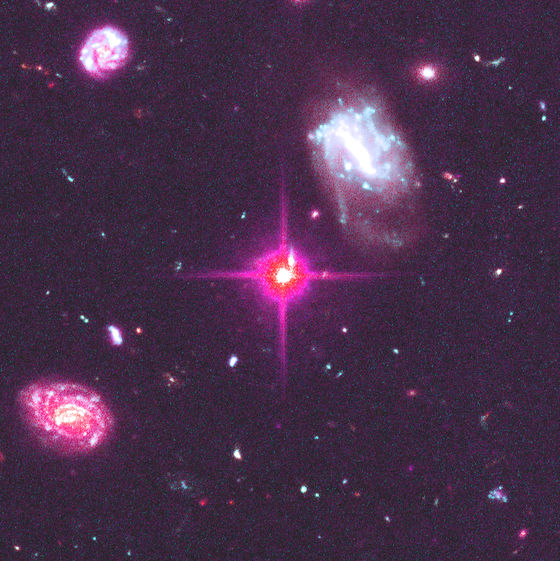Introducing a neural network for analysis of gravitational lenses, the work speeds up to 10 million times faster

ByNASA Hubble Space Telescope
Owned bySLAC National Accelerator Research InstituteAnd Stanford University researchers used the neural network for the first time in the worldGravity lensWe published a warpage analysis method and showed that analysis can be performed 10 million times faster than the conventional method.
Neural networks meet space | symmetry magazine
http://www.symmetrymagazine.org/article/neural-networks-meet-space

SLAC National Institute of Accelerator Research and Stanford Collaborative Research InstituteKavli Particle Astrophysics and Cosmology(KIPAC) research team to use a neural network to analyze the image of gravity lensAnnouncementDid. The light emitted by stars and galaxies is bent by the gravity of countless celestial bodies and galaxy clusters that exist between the earth and it looks bright, looks like a bow, or looks like a ring. The phenomenon that causes this distortion is a gravitational lens, and by analyzing this it is possible to know the mass distribution in outer space and how the mass distribution changes with the lapse of time. Also, analysis of the gravitational lens is said to occupy 85% of the material of the entire universeDark matterAnd it is said to accelerate the expansion of the universeDark energyIt is believed to lead to the elucidation of.
The analysis of the distortion of the gravitational lens is done in the process of comparing with the computer simulation using the mathematical lens model, and until now it took several weeks to several months to analyze a single image. On the other hand, with the analysis method using the neural network created by KIPAC, images can be analyzed in just a few seconds. In the research, the analysis precision is also verified using images and simulations actually taken by NASA's Hubble Space Telescope, and it has been found that analysis results comparable to conventional methods can be obtained.
In order to make the neural network learned, researchers at KIPAC seem to use simulated images of about 500,000 gravity lenses on the 1st. As a result, it seems that the neural network can analyze new gravity lens images immediately with accuracy comparable to the conventional analysis method.
The following image is a gravitational lens image taken by NASA's Hubble Space Telescope

"The neural network we tested (three publicly-released neural nets and what we made ourselves) are" what kind of mass distribution each gravity lens has? "And" behind the scenes I was able to conclude the characteristics such as "How much is expanding the expanding universe?" "Yashar Hezaveh, the first author of a research paper, said. In addition, the way the neural network is used in this paper is "to use a neural network to judge whether the image contains gravity lens or not", which existed in the astronomical physics world so far It is far beyond that. "
Currently, SLAC National Accelerator LaboratoryLarge Synoptic Survey TelescopeIt is speculated that this is useful for discovering more gravitational lenses than ever using a 3.2 Gigapixel gigantic camera. "To analyze these data in a traditional way obviously the number of people is insufficient.The neural network helps to identify interesting objects quickly and analyze them.This is because we have to think about the universe It will give you time, "said Perreault Levasseur, one of the coauthor of the paper.

ByRich Murray
In addition, Phil Marshall, a KIPAC scientist and coauthor of thesis, said: "The surprising thing is to learn what the neural network searches for itself, which means that small children recognize things It is comparable to the learning process, because when people teach children how dogs are, they do not try to convey the details precisely but they show and show the real photographs. " Hezaveh also highlights the excellent points of the neural network, "In addition to collecting pictures of dogs from photos, we will also inform you of information such as weight, height, age of dogs."
In the research, KIPAC scientists were invited from the Stanford Research and Computing CenterSherlock ClusterIt seems that we conducted the test of the neural network with, but it seems that we could do the calculations on PC and mobile phone. Indeed, one of the neural networks tested by the research team is designed to work on the iPhone.
It is clear that the neural network is useful for data processing and analysis in astrophysics and other fields like the results of this research, and as the application progresses, various discoveries that have not been unveiled so far only by human hands It might be found.
Related Posts:
in Science, Posted by logu_ii







